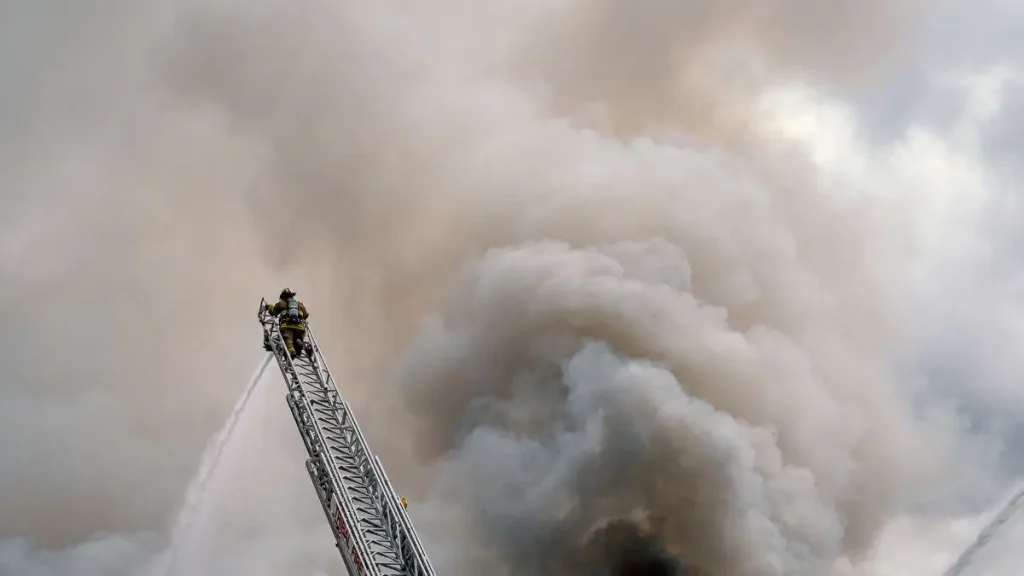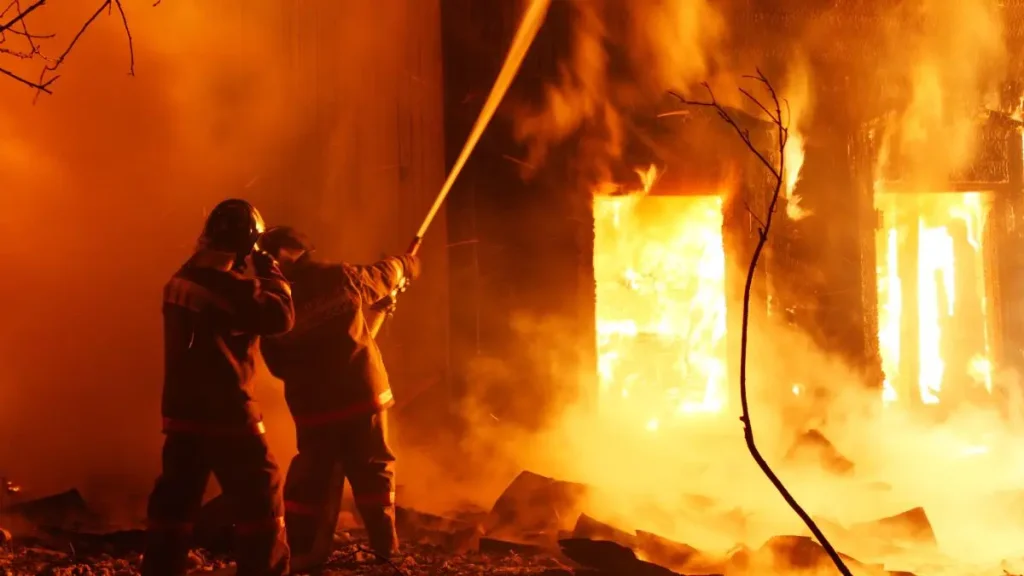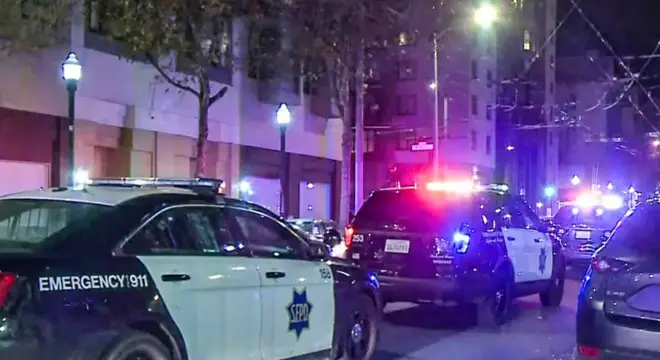Indiana County House Fire Claims Lives of Two Children
I still can’t shake the image of that small home on Dilltown Heights Road — quiet, tucked away in Buffington Township — before flames tore through it just before dawn. It was around 2:30 a.m. on Sunday when firefighters got the call. By the time they arrived, the house was already engulfed.
Inside were five people. Three made it out. Two children — a 12-year-old girl and a 14-year-old boy — didn’t. Indiana County Coroner Jerry L. Overman Jr. later confirmed their deaths.
Neighbors say the fire moved fast, too fast. Crews fought to bring it down, but every time they gained ground, the flames flared somewhere else. Even hours later, smoke was still rising from what used to be the family’s home — just a pile of rubble by Sunday afternoon.
For small communities like Dilltown, a tragedy like this hits differently. Everyone knows someone involved. You hear the sirens in the dark and instantly start praying it’s not someone you know — but this time, it was.
It’s hard not to ask yourself what if? What if someone had noticed sooner, what if there’d been another way out, what if it hadn’t happened while everyone was asleep? Those are the thoughts that echo through towns after fires like this.
If you live in a rural area like Buffington Township, how ready is your family if a fire breaks out at night?
Who the Victims Were — Lives Lost Too Soon

They weren’t just names in a report — they were kids with laughter that filled a school bus.
According to CBS News Pittsburgh, the victims were a 12-year-old girl and a 14-year-old boy, both from the same small Indiana County community. Family friend Kara Baird told reporters they were girlfriend and boyfriend — inseparable, always joking, always smiling.
Baird drove their school van for years. “She was full of life, such a nice little girl,” she said. And the boy — Justin Haase — was remembered in an online obituary as the kind of kid who made sure everyone around him smiled.
It’s one thing to read about a tragedy. It’s another to picture two young people who still had so much life ahead — weekend plans, school dances, little dreams that never got to unfold. That’s what makes this story stay with you long after you finish reading it.
When loss hits this close to home, it reminds you how fragile everyday moments are — the quick goodbyes before bed, the lights flicking off before sleep.
The Fire Scene — A Home Reduced to Rubble
By Sunday afternoon, there was barely anything left of the house — just a mound of charred debris still sending thin smoke into the sky. Firefighters said it was one of the hardest battles they’ve faced in a while. Every time they knocked one area down, another part flared up again.
A KDKA-TV crew saw it firsthand. Even hours later, when the smoke seemed to fade, they called 911 again after spotting fresh flames in the rubble. That second call brought crews back to fully extinguish what was left.
If you’ve ever lived in a rural area, you know how fire behaves differently out there — slower response times, limited water access, long stretches of dark roads. By the time help arrives, the fire often has already claimed what it came for.
It’s haunting to think that what once held laughter, warmth, and family dinners was gone before sunrise.
Just last month, a Raleigh house fire destroyed a home, but thankfully, everyone made it out safely — a reminder that every second counts when a fire breaks out.
Family Friend Speaks — Loss, Hardship, and Hope
Baird’s voice cracked as she spoke about the family. “They lost everything — there are no pictures, there’s nothing,” she said. Her words cut through the noise of statistics and reports. Behind every tragedy are people trying to piece together what’s left of their lives.
She shared that the family didn’t have much, but they gave everything they could to their kids. Now, they’re staying with an aunt, trying to figure out how to move forward. Baird has started raising money to help with funeral costs and basic needs.
It’s a kind of pain most of us can’t imagine — losing your home, your children, and the memories that made that home feel alive. Yet somehow, in small communities like Dilltown, hope shows up in familiar faces, helping hands, and neighbors who refuse to let anyone suffer alone.
If you’ve ever wondered whether small gestures matter, this family is proof — they do.
Local volunteers have already started sharing donation updates and safety reminders through community WhatsApp groups — a growing trend that’s helping people stay informed faster during emergencies.
Investigators Seek Answers — What Caused the Fire?
Investigators haven’t confirmed the cause yet, but they’re piecing together clues. The Indiana County Fire Marshal is leading the probe, and officials have been on scene since Sunday morning.
Family friend Baird mentioned something that stings a bit deeper — “They were just trying to heat their home.” In rural Pennsylvania, that sentence tells a story of its own. Propane heaters, space heaters, and old wiring are part of daily life when temperatures dip.
According to the National Fire Protection Association (NFPA), heating equipment is the second-leading cause of home fire deaths in the United States. It’s often not neglect — it’s survival. When families do their best with what they have, one small mistake can become a nightmare.
This part of the story reminds me that tragedies like this aren’t random — they’re warnings about safety gaps that need attention before another headline repeats the same pain.
A similar investigation followed the Western Wisconsin fire, where officials worked to determine what sparked a deadly blaze in another quiet community.
Overnight Fire Dangers in Rural Homes

If you’ve ever lived in the countryside, you know nights can be brutally cold — and quiet. That quiet is what makes overnight fires so dangerous. When everyone’s asleep, smoke spreads before anyone even wakes up.
National data from the U.S. Fire Administration shows most fatal house fires happen between 11 p.m. and 6 a.m. Add rural distance, older homes, and limited hydrants, and the risk multiplies.
Indiana County’s older housing and winter heating setups make it especially vulnerable. Many families rely on portable heaters or propane tanks — affordable, yes, but unforgiving if mishandled or left too close to curtains or bedding.
I’m not saying fear your own home — but it’s worth asking yourself: When was the last time you checked your smoke alarms or replaced an old heater cord? Because the hard truth is, tragedy doesn’t give a warning.
In Georgia, a house fire turned deadly under similar overnight conditions — proving again that darkness and distance can make all the difference between escape and tragedy.
How to Stay Safe — A Simple Fire Safety Checklist for Every Home
After reading about this fire, I found myself double-checking my own smoke alarms that same night. You can’t read stories like this and not think about your own family. The truth is, most deadly fires happen when people think they’re being careful enough.
Here’s a quick checklist that could literally save a life — yours, your kids’, or your neighbors’:
- Test smoke alarms every month. Replace the batteries once a year, no excuses.
- Keep heaters at least three feet away from anything that can burn — curtains, furniture, bedding.
- Never leave a space heater unattended, even for a few minutes.
- Avoid overloading outlets or using damaged cords.
- Plan two ways out of every room, especially bedrooms.
- Teach your kids what to do if the smoke alarm sounds — where to go, who to call.
- Clean chimneys and vents before winter starts if you use wood or propane heating.
These aren’t complicated steps. They just need consistency. And when you’ve lived through cold rural nights, it’s easy to forget how one small thing — a frayed cord, a blocked vent — can change everything.
If you’re reading this right now, promise yourself one thing: before tonight ends, test your smoke alarm.
The Community Grieves — and Rallies to Help
What stands out most in tragedies like this isn’t just the loss — it’s how people show up afterward. The United School District shared its condolences publicly and arranged counselling for students and staff. Teachers, parents, and friends gathered to comfort each other, trying to make sense of something that never will.
Online, the community’s grief poured out — Facebook tributes, photos of the two kids smiling at school events, and messages filled with heartbreak. Local churches started donation drives; neighbors dropped off food, blankets, and cash to help the family stay afloat.
I’ve seen this pattern before — small towns might not have everything, but when pain strikes, they have each other. In moments like these, that’s what survival looks like: not moving on, but moving forward together.
If you’re nearby and want to help, even sharing the verified fundraiser link or dropping off essentials can mean more than you think.
Remembering the Victims, Supporting the Survivors
There’s no easy way to end a story like this. Two kids gone, a home turned to ashes, a family trying to rebuild from nothing — words never feel enough. But maybe the point isn’t to close it neatly. Maybe it’s to remember them by doing better ourselves.
Check your smoke alarms. Talk to your kids about fire safety. Donate if you can. And if nothing else, keep this family in your thoughts — because the more people who remember them, the fewer chances we have of repeating their story.
Loss doesn’t end when the smoke clears; it lives in the spaces where love used to be. But so does resilience. And sometimes, that’s all a community needs to begin again.
What about you? If you had just five minutes tonight to make your home a little safer — what would you change first?
For more real-life fire stories and prevention insights, visit our Home Incidents section — each story is a reminder of why awareness matters.
Disclaimer: Details in this article are based on verified public reports and official statements available at the time of writing. The investigation into the Indiana County house fire is ongoing, and updates may change as new information is released. All quotes and facts are presented with respect to the victims and their families.


